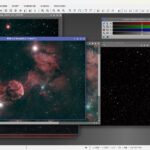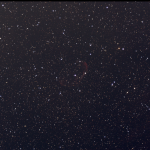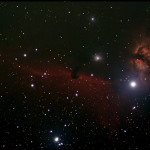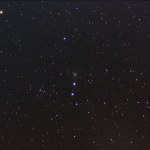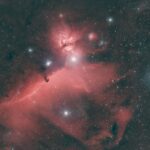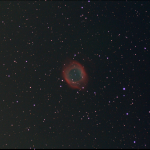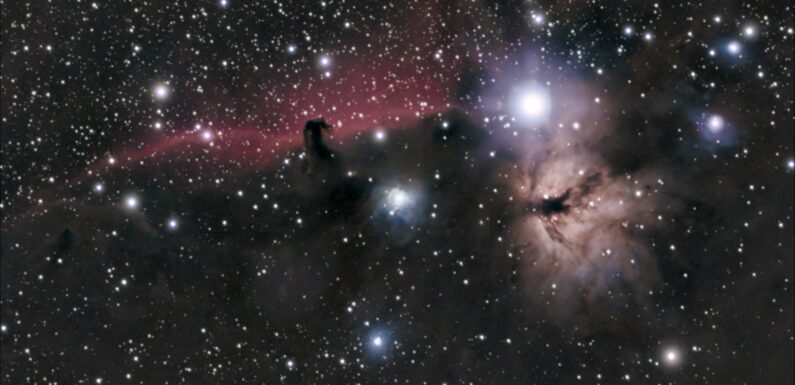
Earlier in the day it was windy, stormy, and we even lost power for a little over an hour, but as it got later in the afternoon the wind died down and the skies cleared up. It was a bit cooler than it has been and there was a little bit of a Moon (22% waxing), but a nice clear night for capturing some far off light. I decided to have a go at the February 2024 CloudyNights Goofi’s Beginner Deep Sky Imaging Challenge which is an old favorite, the Horsehead Nebula.
| Primary (Imaging) | Secondary (Guiding) |
|---|---|
| Scope: SVBONY SV503 102ED Reducer/Flattener: SVBONY SV193 0.8 FR/FF Filter: None Camera: ZWO ASI294 MC Pro, Cooled to -10 C Focuser: ZWO EAF Mount: Sky Watcher EQ6-R Pro |
Scope: SVBONY SV106 60mm Guide Scope Camera: Orion Star Shooter Autoguider (OSSAG) |
| Telescope Control, Image Acquisition, and Image Processing Software | |
|
Equipment Control and Imaging Software: KStars/Ekos connecting to INDI Server on a Raspberry Pi Stacking and Processing Software: Siril astronomical image processing tool |
|
I uncovered the scope in the late afternoon, after the wind died down. Just after dark I ran the Ekos Auto focus which set the focus steps at 10141. Plate solving is calculating the focal length at 569.6 or F/5.6. With good focus and plate solving working I ran the Ekos Polar Alignment routine, it was only a little off and it did not take long to get a decent polar alignment.
Slewed the scope over to NGC 2023 which is the emission and reflection nebula between the Horsehead and the Flame. Centering NGC 2023 frames the entire area nicely with both the Horsehead Nebula and the Flame Nebula in the field of view. With good focus and a pretty spot on polar alignment I started guiding and then capturing light. I collected 33 x 300 seconds at 121 gain, offset 30, and bin 2×2. I don’t think there was a frame that I collected which did not have an air plane or a satellite in it, but these stacked out. Stacked, calibrated (darks, flats, and biases), cropped, flipped, and processed using Sirilic and Siril.
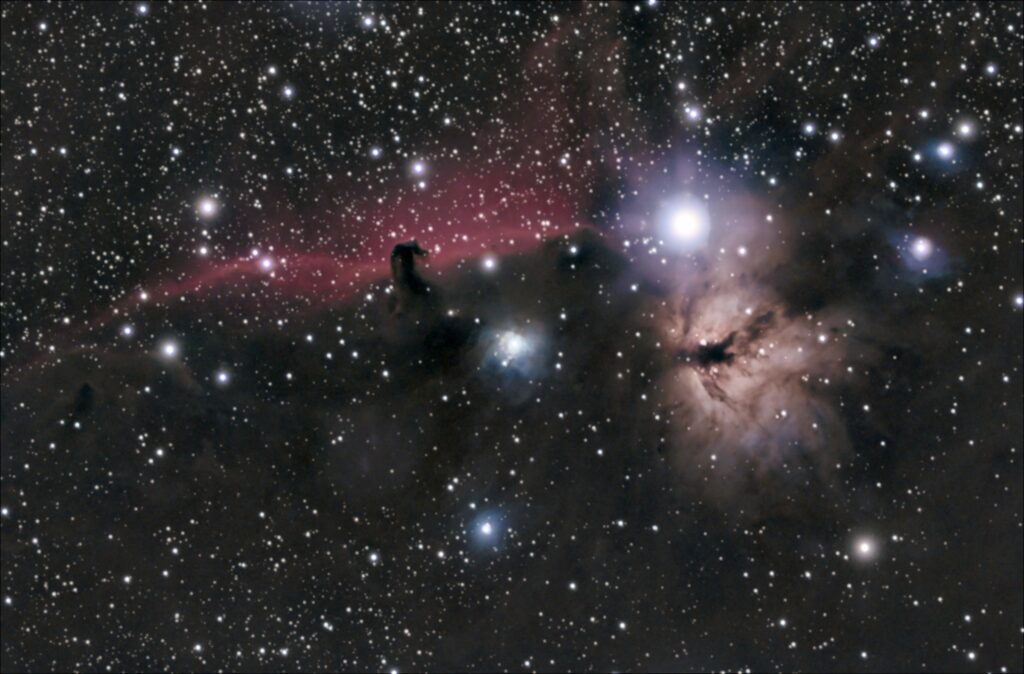
IC 434 is the bright red emission nebula behind the dark Horsehead Nebula (Barnard 33), which is part of the Orion molecular cloud complex. NGC 2023 is right in the center. The bright star is Alnitak, which looks a bit like it has a flat side, not sure what caused that or how to fix it 🙁
I dig the dark nebula near the left center edge of the FOV.
Always good to capture some photons from a couple of favorites. Next clear sky I have plans for a new target… stay tuned.
Updated 02/15/2024
I did a bit more tinkering with processing in Siril. I think I was able to bring out some more fine details.
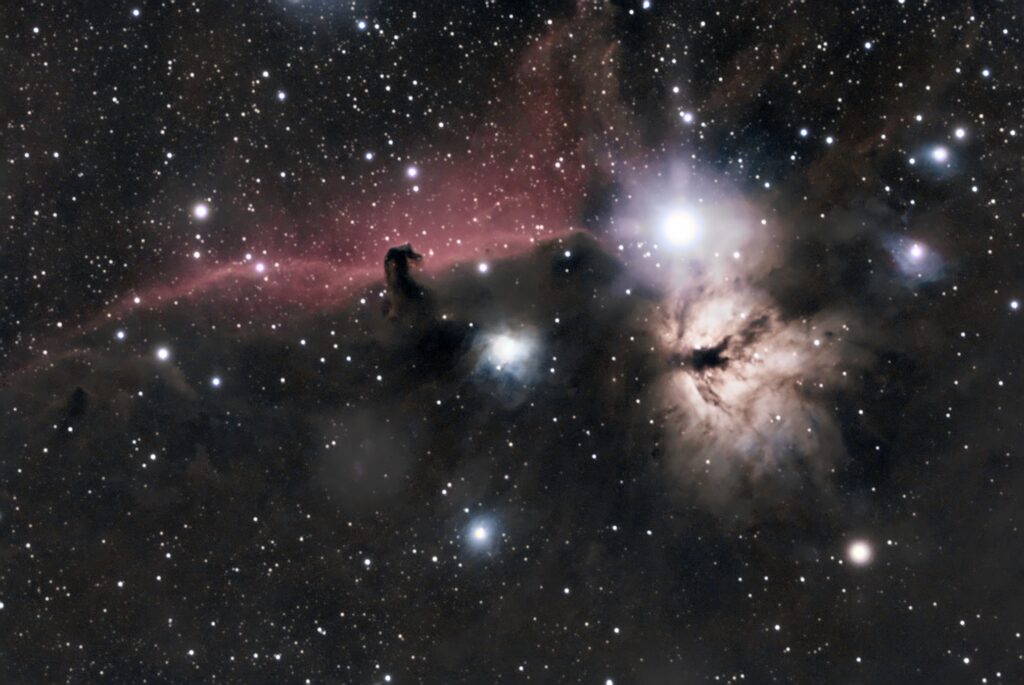
The differences are slight, but I think there is a bit more detail in this with out totally blowing out the bright starts. What do you think?


